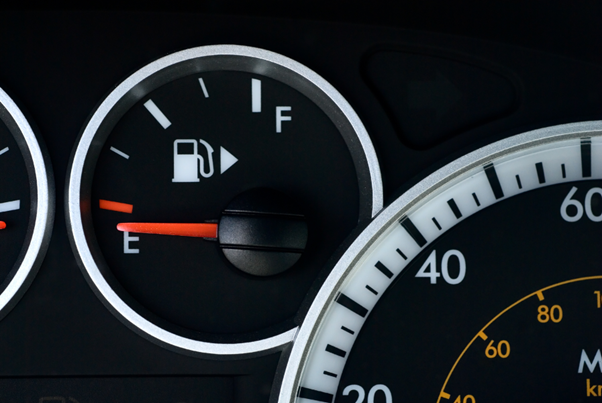What happens when your car runs out of fuel?

Have you ever gotten into your car and realized your gas tank is running low a few miles into it? It’s a common mistake many drivers experience, you are not alone. But what if you’re far away from a gas station? Can you push driving on a low tank? What happens if you eventually run out of fuel? Read on to find out.
Behind the Wheel
Sensors in your car’s tank are responsible for alerting you when the fuel level is low. But life happens, and sometimes, you forget to pay attention to the indicator lights.
When your car runs out of gas, it won't necessarily stop abruptly. Instead, you'll likely notice signs of fuel depletion, such as sputtering, power surges, and occasional engine backfires. You'll also experience a loss of power, signaling the need to pull over safely to the right shoulder as far off the road as possible.
Running out of gas also affects your braking and steering since hydraulic power to these systems diminishes. While you can still steer and stop your car, it requires extra effort. Electric power steering-equipped vehicles are an exception, as they maintain functionality as long as the battery has power.
Mechanical Implications
Depleting your fuel supply can damage your vehicle, particularly the fuel delivery system. Modern cars feature electric fuel pumps within the gas tank, which rely on gasoline for cooling and lubrication. These pumps can overheat and fail with minimal gas left, leading to costly repairs.
The real trouble arises if the failing fuel pump sheds debris into your fuel system. This can clog your fuel filter or enter fuel injectors, causing blockages that make restarting your car difficult and lead to expensive fixes.
Even if no debris enters, air can infiltrate the fuel line when the tank is empty, necessitating air removal before the car runs correctly.
What to Do When Your Car Runs Out of Gas
If your car exhibits signs of running out of gas, confirm your suspicion by checking the fuel gauge or low-fuel indicator light. Safely guide your vehicle to the roadside, turning off the ignition and activating emergency flashers.
Walking to a nearby gas station with a gas can is an option if you're close. Otherwise, contact your auto club, roadside assistance provider, or a nearby gas station for help. Waiting for assistance inside your car is generally safer.
After refilling the tank, your car should start and run smoothly. If not, towing it to a technician for diagnosis and repairs is wise.
Preventing the Problem
To avoid these hassles, never let your car's fuel level get too low. Consider refilling when it reaches the quarter-tank mark.
Conclusion
Running out of gas can be both inconvenient and potentially damaging to your vehicle. It's essential to recognize the signs of low fuel and respond promptly by safely pulling over and seeking assistance if needed. Preventing the problem by maintaining an adequate fuel level is the best approach to ensure a smooth and trouble-free journey on the road.